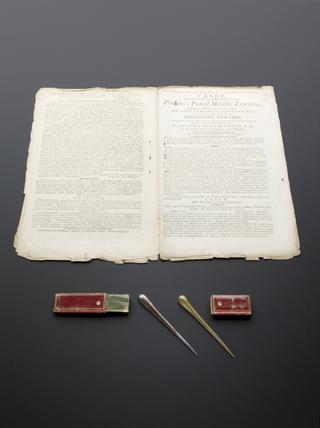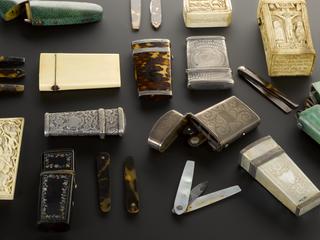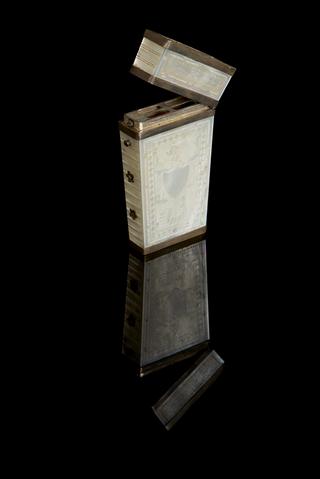




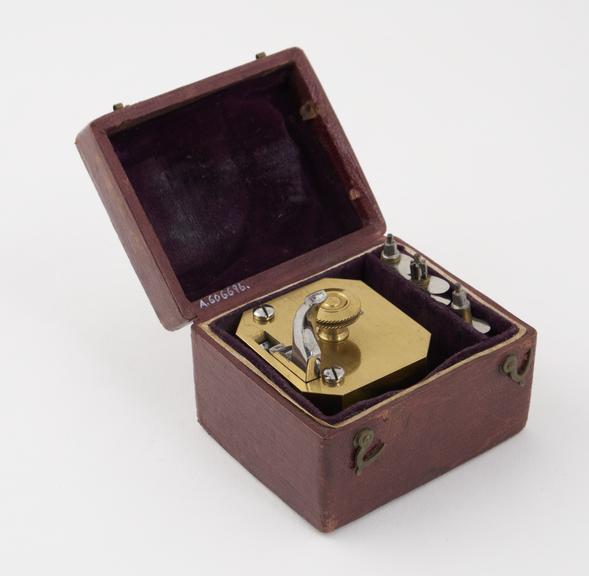
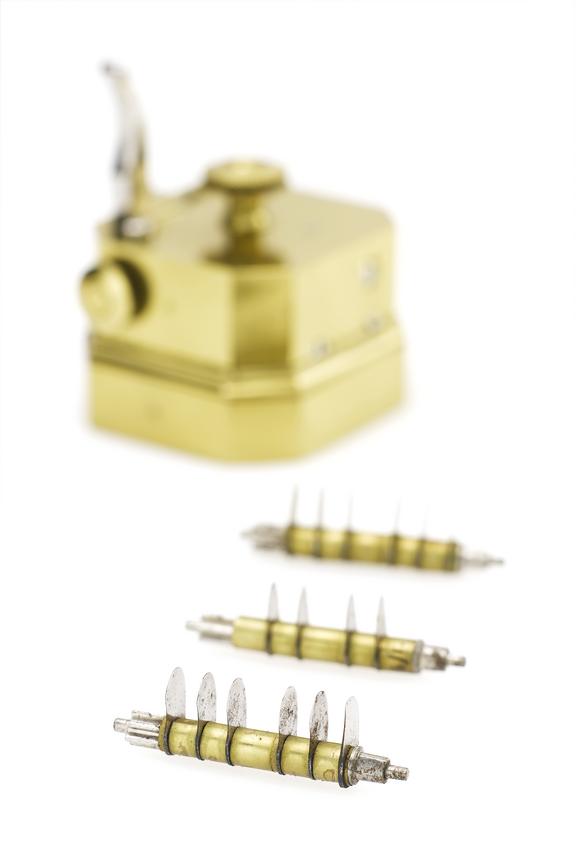


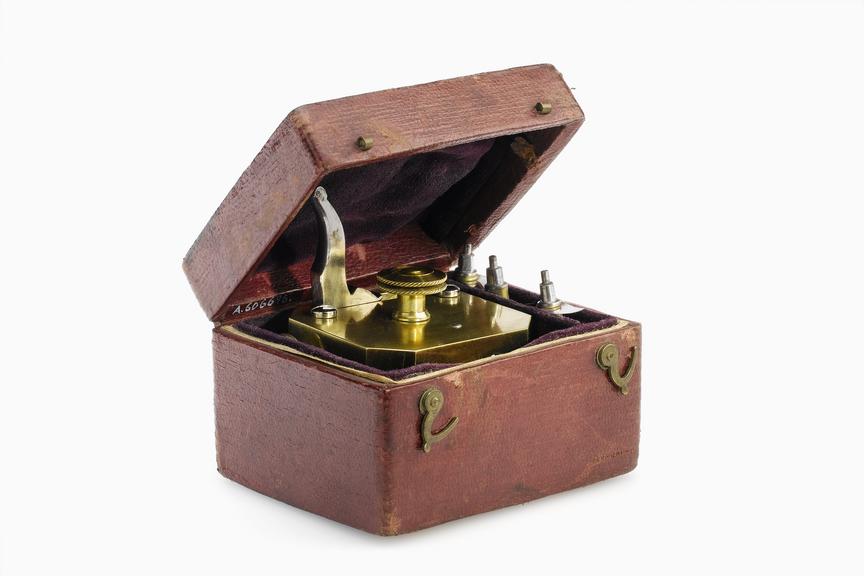
Brass scarificator, with 12 lancets, in case, 1801-1900
Scarificators were used in bloodletting, a once popular treatment prescribed for a range of medical conditions, usually in combination with cupping. This brass device has twelve lancets operated by a spring released trigger. Skill was needed to make sure that the blade did not cut too deep into the body. Once the skin was cut, a special rounded glass cup could be applied over the wound. When warmed, it would help draw the blood out at a faster rate.
The scarificator was introduced in the late 1600s, but they reached the peak of their sophistication and usage in the 1800s.
Details
- Category:
- Therapeutics
- Collection:
- Sir Henry Wellcome's Museum Collection
- Object Number:
- A606696
- Materials:
- scarificator, brass, scarificator, steel, case, wood, case, velvet, lined and case, leather, covered
- type:
- scarificator
